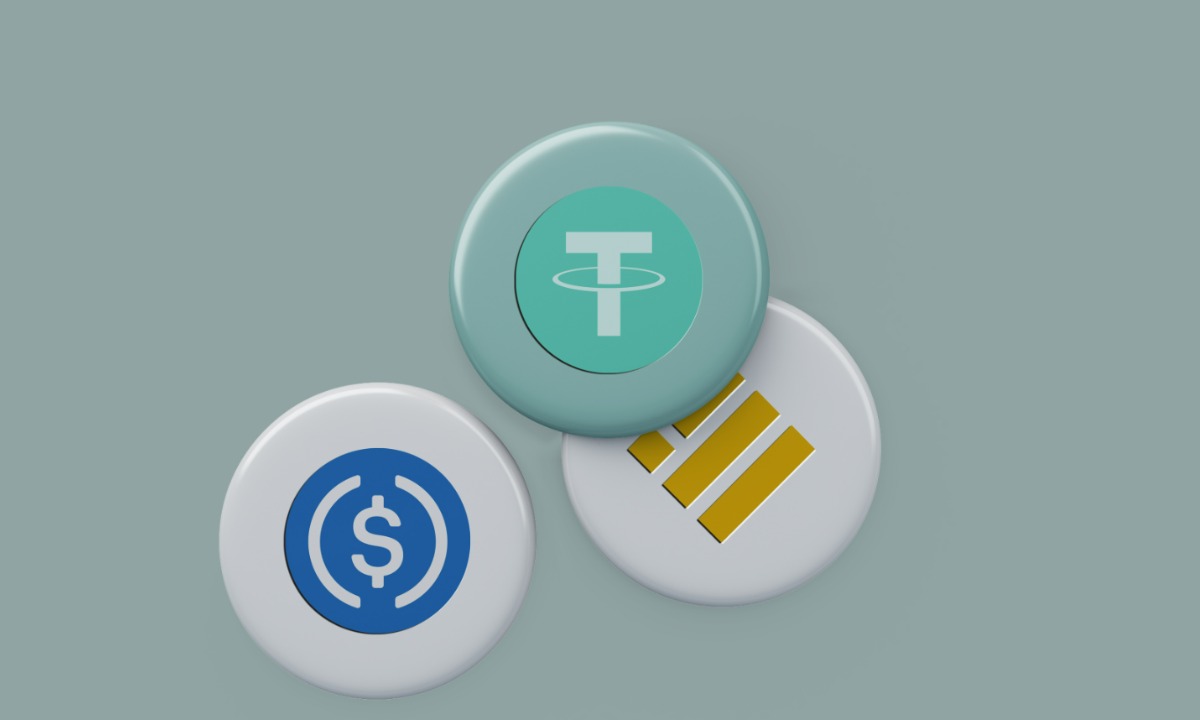-
How to create an Ethereum address from a Bitcoin private key
-
Date:2024-07-19 19:21:35 Channel:Exchange Read:
In today's trend of digital currency, Bitcoin and Ethereum are undoubtedly the two most watched stars. However, some people may be curious about how to create an Ethereum address with a Bitcoin private key? This not only involves technical challenges, but also a wonderful interweaving of the digital financial world. Let us unveil this mysterious veil and explore the mystery.
The relationship between Bitcoin private key and Ethereum address is like the relationship between lock and key, inseparable. Bitcoin private key is a string of 64 hexadecimal characters. It is the core of Bitcoin transactions and carries the user's digital asset ownership. The Ethereum address is the location for receiving and sending Ether in the Ethereum network, and is an indispensable existence in the world of digital currency. So, how to use Bitcoin private key to create an Ethereum address? Next, we will find out.
First, we need to understand the mathematical relationship between Bitcoin private key and Ethereum address. In fact, there is a mathematical conversion relationship between Bitcoin private key and Ethereum address, which is achieved through elliptic curve cryptography. Elliptic curve cryptography is a very efficient and secure encryption algorithm that is widely used in the field of digital currency. Through this algorithm, we can convert Bitcoin private keys into Ethereum addresses, thereby realizing the transfer and management of assets in two different blockchain networks.
Secondly, we need to use some tools and technologies to realize the conversion of Bitcoin private keys to Ethereum addresses. At present, there are some special software and websites on the market that can help users realize this conversion process. Users only need to enter their Bitcoin private keys into these tools, and then the tools will automatically help users generate the corresponding Ethereum addresses. Of course, in the process of using these tools, users need to pay special attention to security to avoid the risk of asset loss caused by private key leakage.
In addition to using tools, some professional digital currency exchanges also provide Bitcoin private key to Ethereum address conversion services. Users only need to perform corresponding operations on the exchange platform to realize the conversion of Bitcoin private keys to Ethereum addresses. This method is not only convenient and fast, but also relatively safe and reliable, and has been favored by the majority of digital currency investors.
It is worth mentioning that the conversion of Bitcoin private keys to Ethereum addresses is not static. With the continuous development of blockchain technology, more and more convenient conversion methods may appear in the future. Therefore, for digital currency enthusiasts, timely understanding and mastering these new technologies will help to better manage and use their digital assets.
In the world of digital currency, Bitcoin and Ethereum are two shining pearls, each with its own unique characteristics and charm. Being able to create an Ethereum address with a Bitcoin private key is not only a cross-border exploration in technology, but also a wonderful adventure in the world of digital finance. I hope that through the introduction of this article, readers can have a deeper understanding of this process, and can also navigate the world of digital currency with ease, control their own wealth ship, and ride the wind and waves.
The four most famous international exchanges:
Binance INTL
OKX INTL
Gate.io INTL
Huobi INTL




China Line APP DL China Line APP DL
China Line APP DL
China Line APP DL
Note: The above exchange logo is the official website registration link, and the text is the APP download link.

How to create an Ethereum address with a Bitcoin private key. In a blockchain wallet, a private key can generate a public key, but it is impossible to deduce a private key from a public key. Information encrypted with a public key can be decrypted with a private key, and information signed with a private key is verified by a public key. Only after verification can it be proved that the information is indeed published by the private key holder. Taking BTC as an example, the most important role in this process is the "elliptic curve encryption algorithm". Some people think that BTC and ETH are different chains, so the elliptic curves used are not the same, but in fact both chains use the same secp256k1 curve, so the way to obtain the public key is exactly the same. The difference is in the process of generating an address from a public key. Next, we will first introduce how to generate a private key securely, and then explain how ETH verifies the public key generated by the private key from the address. Specifications of private keys
The private key must be a positive integer and must be less than the order of the secp256k1 curve (the order of secp256k1 is FFFFFFFFFFFFFFFFFFFFFFFFFFFFFFFFFEBAAEDCE6AF48A03BBFD25E8CD0364141). Each point can be represented by a set of 256 bits, and 256 bits is exactly 32 bytes, so we need to provide 32 bytes of data for this curve algorithm.
In other words, the private keys of BTC and ETH are a set of 32-byte strings, but it can also be a binary string, Base64 string, WIF key, mnemonic phrase, or hexadecimal string.
Secure private key generation
Since we all know that they use the same curve, we can actually use bitaddress.org, which is more trusted by the BTC community, to generate our private keys (MEW or Metamask are also good choices, at least it is not a string of exposed private keys), but if we have a good sense of security, we should not even use the browser to generate our important private keys (you can see the discussion on Reddit), so we will use Python to design a simpler bitaddress.
Understand the principle of Bitaddress
Bitaddress does three things. First, initialize the byte array, then try to get as much entropy as possible from the user's computer, fill the array according to the user's input, and finally generate a private key.
Bitaddress uses a 256-byte array to store entropy. This array is overwritten in a loop, so when the array is filled for the first time, the index becomes zero, and then the overwriting process starts again.
The program generates a 256-byte array from window.crypto. Then write a timestamp to get 4 bytes of entropy. After that, it gets some other data including screen size, time zone, browser extensions, region, etc. to get another 6 bytes.
After initialization, the user continues typing to overwrite the initial bytes. When the cursor is moved, the program writes the cursor position. When a button is pressed, the program writes the character code of the button pressed.
Finally, bitaddress uses the accumulated entropy to generate a private key. bitaddress uses an RNG algorithm called ARC4. ARC4 is initialized with the current time and the collected entropy, and then bytes are taken one by one, a total of 32 times.
Initialize our own seed pool
We write some bytes from the cryptographic RNG and a timestamp. __seed_int
and __seed_byte are two functions that insert entropy into the pool's array, and we use secrets to generate our random numbers.
Fill the seed pool with input
Here we first write a timestamp and then the string entered by the user.
Generate a private key
First, use our pool to generate a 32-bit number and make sure our private key is in the range (1, CURVE_ORDER), then for convenience, we convert it to hexadecimal and remove the 0x part.
Generate an ETH public key
Substituting our private key into the elliptic curve, we will get a 64-byte integer, which is two 32-byte integers representing the X and Y points connected together on the elliptic curve.
Checksum (ERC-55)
Bitcoin creates a checksum by hashing the public key and getting the first 4 bytes of the return value. If you don't add the checksum, you can't get a valid address.
But Ethereum didn't have a checksum mechanism to verify the integrity of the public key at the beginning. It wasn't until Vitalik Buterin introduced the checksum mechanism in 2016, which is
EIP-55, and it was later adopted by various wallets and exchanges.
Add the checksum to the Ethereum wallet address to make it case-sensitive
First, get the Keccak-256 hash of the address. It should be noted that there should be no 0x part when passing this address to the hash function.
Second, iterate the bytes of the initial address in order. If the i-th byte of the hash value is greater than or equal to 8, convert the characters of the i-th address to uppercase, otherwise keep it in lowercase.
Finally, add 0x back to the beginning of the returned string. If case is ignored, the checksum address will be the same as the initial address. But using an uppercase address allows anyone to verify whether the address is valid.
This checksum has several benefits:
1\. It is backward compatible with many hexadecimal parsers that accept mixed case, and can be easily introduced in the future;
2\. Keep the length to 40 characters;
3\. On average, each address will have 15 check digits. If the input is wrong, the net probability of a randomly generated address accidentally passing the check will be 0.0247%, which is not as good as a 4-byte checksum code, but it is about 50 times better than ICAP;
Summary
Creating a wallet address for Ethereum is much simpler than Bitcoin. All we need to do is throw the private key through the elliptic curve, throw the resulting public key through Keccak-256, and then extract the last 20 bytes of the hash.
I'll answer.
Articles related to tags
- US Senator Bitcoin can vote with its feet Don’t create a hosti
- How to trade OK Wallet coins OK Wallet Trading Tutorial
- Taking stock of the mysterious creators of Bitcoin Who are thes
- How to download the Pancake Exchange APP Pancakeswap official w
- How to buy Litecoin Cash LCC Currency Buying and Trading Tutori
- What does Bitcoin quarterly contract mean Popular explanations
- Being bombarded by Ponzi scheme and environmental public opinion
- Rich Dad author Global economy may collapse Bitcoin is worth $
- Bitcoin price dropped by half What are Bitcoin miners and minin
- What should I do if my Bitcoin position is liquidated Do I have
user
2480
Ask
977K+
reading
0
Answer
3H+
Upvote
2H+
Downvote
-
 Artery Network(ARTR幣)在那裏挖?ArteryNetwork(ARTR幣)是一種新興的加密貨幣,它的採礦過程與比特幣和以太幣等其他加密貨幣類似。ARTR幣的挖礦過程是通過計算機資源解決複雜的數學問題來獲取新的幣。這一過程需要大量的計算能力和電力,因此挖礦者需要投入相應的硬件和電力成本。 A2025-03-26 21:33:09
Artery Network(ARTR幣)在那裏挖?ArteryNetwork(ARTR幣)是一種新興的加密貨幣,它的採礦過程與比特幣和以太幣等其他加密貨幣類似。ARTR幣的挖礦過程是通過計算機資源解決複雜的數學問題來獲取新的幣。這一過程需要大量的計算能力和電力,因此挖礦者需要投入相應的硬件和電力成本。 A2025-03-26 21:33:09 -
 Litbinex Coin(LTB幣)走勢如何LitbinexCoin LTB幣 作為一種加密貨幣,其價格走勢取決於市場供求和投資者對其價值的認知。在過去的一段時間裡,LTB幣的價格可能出現了一些波動,這可能是由於市場情緒、新聞事件或技術因素所引起的。 在過去的幾個月中,全球加密貨幣市場經歷了一些波動2025-03-26 21:33:03
Litbinex Coin(LTB幣)走勢如何LitbinexCoin LTB幣 作為一種加密貨幣,其價格走勢取決於市場供求和投資者對其價值的認知。在過去的一段時間裡,LTB幣的價格可能出現了一些波動,這可能是由於市場情緒、新聞事件或技術因素所引起的。 在過去的幾個月中,全球加密貨幣市場經歷了一些波動2025-03-26 21:33:03 -
 Starbound(SBD幣)最新動態SBD幣,即Starbound,是一种基于区块链技术的加密货币,旨在为用户提供一种快速、安全和低成本的支付方式。最近,Starbound团队宣布了一系列重大动态,以提升其在加密货币市场的地位和影响力。 首先,Starbound团队宣布他们已经与几家知名的加2025-03-26 21:32:59
Starbound(SBD幣)最新動態SBD幣,即Starbound,是一种基于区块链技术的加密货币,旨在为用户提供一种快速、安全和低成本的支付方式。最近,Starbound团队宣布了一系列重大动态,以提升其在加密货币市场的地位和影响力。 首先,Starbound团队宣布他们已经与几家知名的加2025-03-26 21:32:59 -
 Catcoin(CATS幣)最新新聞最新消息指出,Catcoin(CATS幣)在近期取得了巨大的成功,吸引了越來越多投資者的關注。這種加密貨幣是專為貓主人和貓愛好者而設計的,旨在建立一個支持貓咪社群的加密支付系統。 Catcoin的價值一直在不斷上漲,吸引了許多散戶和機構投資者的投入。這種加2025-03-26 21:32:54
Catcoin(CATS幣)最新新聞最新消息指出,Catcoin(CATS幣)在近期取得了巨大的成功,吸引了越來越多投資者的關注。這種加密貨幣是專為貓主人和貓愛好者而設計的,旨在建立一個支持貓咪社群的加密支付系統。 Catcoin的價值一直在不斷上漲,吸引了許多散戶和機構投資者的投入。這種加2025-03-26 21:32:54 -
 YFPI(YFPI幣)最新資訊YFPIYFPI幣是一種加密貨幣,它是由一個名為YFPI的去中心化金融平台所發行的。YFPI的目標是成為一個具有高度流動性和穩定價值的加密貨幣,讓用戶可以更方便地進行交易和支付。 最近,YFPI的價格一直在波動,受到市場情緒和投資者信心的影響。儘管如此,Y2025-03-26 21:32:49
YFPI(YFPI幣)最新資訊YFPIYFPI幣是一種加密貨幣,它是由一個名為YFPI的去中心化金融平台所發行的。YFPI的目標是成為一個具有高度流動性和穩定價值的加密貨幣,讓用戶可以更方便地進行交易和支付。 最近,YFPI的價格一直在波動,受到市場情緒和投資者信心的影響。儘管如此,Y2025-03-26 21:32:49 -
 WaveEduCoin(WEC幣)是詐騙?WaveEduCoinWEC幣是一個虛擬貨幣項目,宣稱旨在為教育領域提供解決方案。然而,有人對這個項目提出了質疑,認為WaveEduCoinWEC幣可能是一個詐騙項目。 首先,WaveEduCoinWEC幣的團隊背景和專業性受到質疑。許多投資者發現他們在官2025-03-26 21:32:43
WaveEduCoin(WEC幣)是詐騙?WaveEduCoinWEC幣是一個虛擬貨幣項目,宣稱旨在為教育領域提供解決方案。然而,有人對這個項目提出了質疑,認為WaveEduCoinWEC幣可能是一個詐騙項目。 首先,WaveEduCoinWEC幣的團隊背景和專業性受到質疑。許多投資者發現他們在官2025-03-26 21:32:43 -
 Pegs Shares(PEGS幣)符合當地法律嗎PegsShares(PEGS幣)是一種加密貨幣,目前在市場上並無法得到明確的法律規範。然而,對於加密貨幣的法律規定在各國各地可能有所不同,因此在使用和投資這種加密貨幣時需要謹慎對待。 在一些國家,加密貨幣被視為合法的貨幣形式,並受到相應的法律保護。然而,2025-03-26 21:32:36
Pegs Shares(PEGS幣)符合當地法律嗎PegsShares(PEGS幣)是一種加密貨幣,目前在市場上並無法得到明確的法律規範。然而,對於加密貨幣的法律規定在各國各地可能有所不同,因此在使用和投資這種加密貨幣時需要謹慎對待。 在一些國家,加密貨幣被視為合法的貨幣形式,並受到相應的法律保護。然而,2025-03-26 21:32:36 -
 JUS Token(JUS幣)總部在那JUSTokenJUS幣是一家总部位于新加坡的加密货币公司。新加坡是一个国际金融中心,拥有完善的法律体系和监管机制,吸引了许多加密货币和区块链公司选择在这里设立总部。 JUSTokenJUS幣总部位于新加坡的好处包括: 1 法律体系完善:新加坡的法律体系健2025-03-26 21:32:30
JUS Token(JUS幣)總部在那JUSTokenJUS幣是一家总部位于新加坡的加密货币公司。新加坡是一个国际金融中心,拥有完善的法律体系和监管机制,吸引了许多加密货币和区块链公司选择在这里设立总部。 JUSTokenJUS幣总部位于新加坡的好处包括: 1 法律体系完善:新加坡的法律体系健2025-03-26 21:32:30 -
 I-COIN(ICN幣)非法傳銷ICN幣是一種加密貨幣,類似於比特幣或以太幣,通過區塊鏈技術進行交易和存儲價值。然而,近年來有一些人利用ICN幣進行非法傳銷活動,給投資者帶來了風險和損失。 非法傳銷是指通過招聘下線、忽悠投資者參與項目來賺取高額回報的行為。在ICN幣的非法傳銷中,一些不法2025-03-26 21:32:27
I-COIN(ICN幣)非法傳銷ICN幣是一種加密貨幣,類似於比特幣或以太幣,通過區塊鏈技術進行交易和存儲價值。然而,近年來有一些人利用ICN幣進行非法傳銷活動,給投資者帶來了風險和損失。 非法傳銷是指通過招聘下線、忽悠投資者參與項目來賺取高額回報的行為。在ICN幣的非法傳銷中,一些不法2025-03-26 21:32:27 -
 Glitch Protocol(GLCH幣)交易合法不GlitchProtocol(GLCH幣)是一種加密貨幣,其交易合法性取決於當地政府對加密貨幣的規定和監管。在一些國家,加密貨幣被視為合法的資產,可以自由交易和使用。然而,在一些國家,政府可能對加密貨幣實施嚴格的監管措施,甚至禁止其交易。 若要確定Glit2025-03-26 21:32:20
Glitch Protocol(GLCH幣)交易合法不GlitchProtocol(GLCH幣)是一種加密貨幣,其交易合法性取決於當地政府對加密貨幣的規定和監管。在一些國家,加密貨幣被視為合法的資產,可以自由交易和使用。然而,在一些國家,政府可能對加密貨幣實施嚴格的監管措施,甚至禁止其交易。 若要確定Glit2025-03-26 21:32:20
-
 Cat(CAT幣)的交易量CAT幣是一種虛擬貨幣,目前在加密貨幣市場中交易量相對較小。然而,隨著加密貨幣市場的不斷發展和成長,CAT幣的交易量也在逐漸增加。 CAT幣的交易量取決於市場需求和供應情況,以及交易所的交易活動。一般來說,CAT幣的交易量可能會受到市場情緒、新聞事件、技術2025-03-26 21:34:43
Cat(CAT幣)的交易量CAT幣是一種虛擬貨幣,目前在加密貨幣市場中交易量相對較小。然而,隨著加密貨幣市場的不斷發展和成長,CAT幣的交易量也在逐漸增加。 CAT幣的交易量取決於市場需求和供應情況,以及交易所的交易活動。一般來說,CAT幣的交易量可能會受到市場情緒、新聞事件、技術2025-03-26 21:34:43 -
 紅域(巧克力)(QKL幣)涉嫌詐騙紅域(巧克力)(QKL幣)是一種虛擬貨幣,近期涉嫌詐騙的傳聞不斷。根據一些用戶的投訴和報導,有人聲稱在投資這個虛擬貨幣時遭受了損失,而且無法取回投資的資金。 在這種情況下,投資者應該格外小心,避免受騙。首先,要確保所投資的虛擬貨幣是合法的,有穩定的背景和可2025-03-26 21:34:37
紅域(巧克力)(QKL幣)涉嫌詐騙紅域(巧克力)(QKL幣)是一種虛擬貨幣,近期涉嫌詐騙的傳聞不斷。根據一些用戶的投訴和報導,有人聲稱在投資這個虛擬貨幣時遭受了損失,而且無法取回投資的資金。 在這種情況下,投資者應該格外小心,避免受騙。首先,要確保所投資的虛擬貨幣是合法的,有穩定的背景和可2025-03-26 21:34:37 -
 Yukon(YUKON幣)倒閉了最近有傳聞指出,Yukon(YUKON幣)可能即將倒閉。這個消息引起了市場的驚慌和困憂,許多投資者和持有者都在擔心他們的資金和投資是否會受到影響。 Yukon是一種加密貨幣,最初是在2017年推出的。它在推出後吸引了很多投資者和用戶,因為它的技術和應用前景2025-03-26 21:34:33
Yukon(YUKON幣)倒閉了最近有傳聞指出,Yukon(YUKON幣)可能即將倒閉。這個消息引起了市場的驚慌和困憂,許多投資者和持有者都在擔心他們的資金和投資是否會受到影響。 Yukon是一種加密貨幣,最初是在2017年推出的。它在推出後吸引了很多投資者和用戶,因為它的技術和應用前景2025-03-26 21:34:33 -
 AGPC TOKEN(AGPC幣)不合法AGPCTOKENAGPC幣 是一种虚拟货币,它并不是任何国家的法定货币,也不受到任何监管机构的监管。因此,AGPCTOKEN 不具备合法货币的属性,也没有法律地位。在很多国家和地区,虚拟货币并不被认可为合法支付工具,因此使用AGPCTOKEN 进行交易可2025-03-26 21:34:27
AGPC TOKEN(AGPC幣)不合法AGPCTOKENAGPC幣 是一种虚拟货币,它并不是任何国家的法定货币,也不受到任何监管机构的监管。因此,AGPCTOKEN 不具备合法货币的属性,也没有法律地位。在很多国家和地区,虚拟货币并不被认可为合法支付工具,因此使用AGPCTOKEN 进行交易可2025-03-26 21:34:27 -
 RentalChain(RNL幣)在中國禁止RentalChainRNL幣是一种基于区块链技术的租赁服务平台的代币,旨在通过区块链技术实现租赁行业的数字化和智能化。然而,由于中国政府对加密货币的监管政策非常严格,目前RentalChain在中国被禁止。 中国政府自2017年开始加强对加密货币的监管,2025-03-26 21:34:19
RentalChain(RNL幣)在中國禁止RentalChainRNL幣是一种基于区块链技术的租赁服务平台的代币,旨在通过区块链技术实现租赁行业的数字化和智能化。然而,由于中国政府对加密货币的监管政策非常严格,目前RentalChain在中国被禁止。 中国政府自2017年开始加强对加密货币的监管,2025-03-26 21:34:19 -
 FlapXCoin(FLAPX幣)是空氣幣FlapXCoinFLAPX幣並不是空氣幣,而是一種虛擬加密貨幣。空氣幣通常指的是沒有實際的價值或用途,只是為了炒作而被創建出來的虛擬貨幣。然而,FlapXCoin是一種經過加密技術保護的數字貨幣,具有真實的價值和用途。 FlapXCoin是通過區塊鏈技術2025-03-26 21:34:13
FlapXCoin(FLAPX幣)是空氣幣FlapXCoinFLAPX幣並不是空氣幣,而是一種虛擬加密貨幣。空氣幣通常指的是沒有實際的價值或用途,只是為了炒作而被創建出來的虛擬貨幣。然而,FlapXCoin是一種經過加密技術保護的數字貨幣,具有真實的價值和用途。 FlapXCoin是通過區塊鏈技術2025-03-26 21:34:13 -
 CPUcoin(CPU幣)是什麽CPUcoin是一种基于区块链技术的加密货币,旨在通过共享计算资源来提高计算机性能和效率。CPUcoin的目标是利用闲置的计算资源,例如个人计算机或数据中心的服务器,来为用户提供更好的计算服务。CPUcoin的核心概念是将计算资源共享化,使得用户可以通过共2025-03-26 21:34:07
CPUcoin(CPU幣)是什麽CPUcoin是一种基于区块链技术的加密货币,旨在通过共享计算资源来提高计算机性能和效率。CPUcoin的目标是利用闲置的计算资源,例如个人计算机或数据中心的服务器,来为用户提供更好的计算服务。CPUcoin的核心概念是将计算资源共享化,使得用户可以通过共2025-03-26 21:34:07 -
 XMZ(XMZ幣)APP下載地址XMZ(XMZ幣)是一種加密貨幣,它是基於區塊鏈技術的去中心化數字貨幣。如果您想要使用XMZ幣進行交易或投資,您可以下載XMZ的官方應用程序來管理您的資產。 XMZ應用程序可以讓您輕鬆地查看您的賬戶餘額、進行轉賬和收款。同時,您還可以通過應用程序查看最新的2025-03-26 21:34:02
XMZ(XMZ幣)APP下載地址XMZ(XMZ幣)是一種加密貨幣,它是基於區塊鏈技術的去中心化數字貨幣。如果您想要使用XMZ幣進行交易或投資,您可以下載XMZ的官方應用程序來管理您的資產。 XMZ應用程序可以讓您輕鬆地查看您的賬戶餘額、進行轉賬和收款。同時,您還可以通過應用程序查看最新的2025-03-26 21:34:02 -
 Sergey Save Link(SSL幣)近期會暴跌?近期,有一些市場分析師對SergeySaveLink SSL幣未來的走勢感到悲觀,認為它可能會暴跌。這種預測主要基於幣值波動性高和市場不穩定的情況下,SSL幣可能會受到影響而下跌。 首先,SSL幣是一種虛擬加密貨幣,價值受到市場供需和投資者情緒的影響。在市2025-03-26 21:33:58
Sergey Save Link(SSL幣)近期會暴跌?近期,有一些市場分析師對SergeySaveLink SSL幣未來的走勢感到悲觀,認為它可能會暴跌。這種預測主要基於幣值波動性高和市場不穩定的情況下,SSL幣可能會受到影響而下跌。 首先,SSL幣是一種虛擬加密貨幣,價值受到市場供需和投資者情緒的影響。在市2025-03-26 21:33:58 -
 Authoreon(AUN幣)近期會暴漲?近期,人們對Authoreon(AUN幣)的關注度正在逐漸增加,這可能導致其價格走勢出現一定程度的波動。有一些人認為,Authoreon的價格可能會出現暴漲的情況,這主要是基於以下幾個原因: 首先,Authoreon是一個新興的加密貨幣項目,它擁有一個強大2025-03-26 21:33:53
Authoreon(AUN幣)近期會暴漲?近期,人們對Authoreon(AUN幣)的關注度正在逐漸增加,這可能導致其價格走勢出現一定程度的波動。有一些人認為,Authoreon的價格可能會出現暴漲的情況,這主要是基於以下幾個原因: 首先,Authoreon是一個新興的加密貨幣項目,它擁有一個強大2025-03-26 21:33:53


 Bitcoin
Bitcoin Binance幣安
Binance幣安


